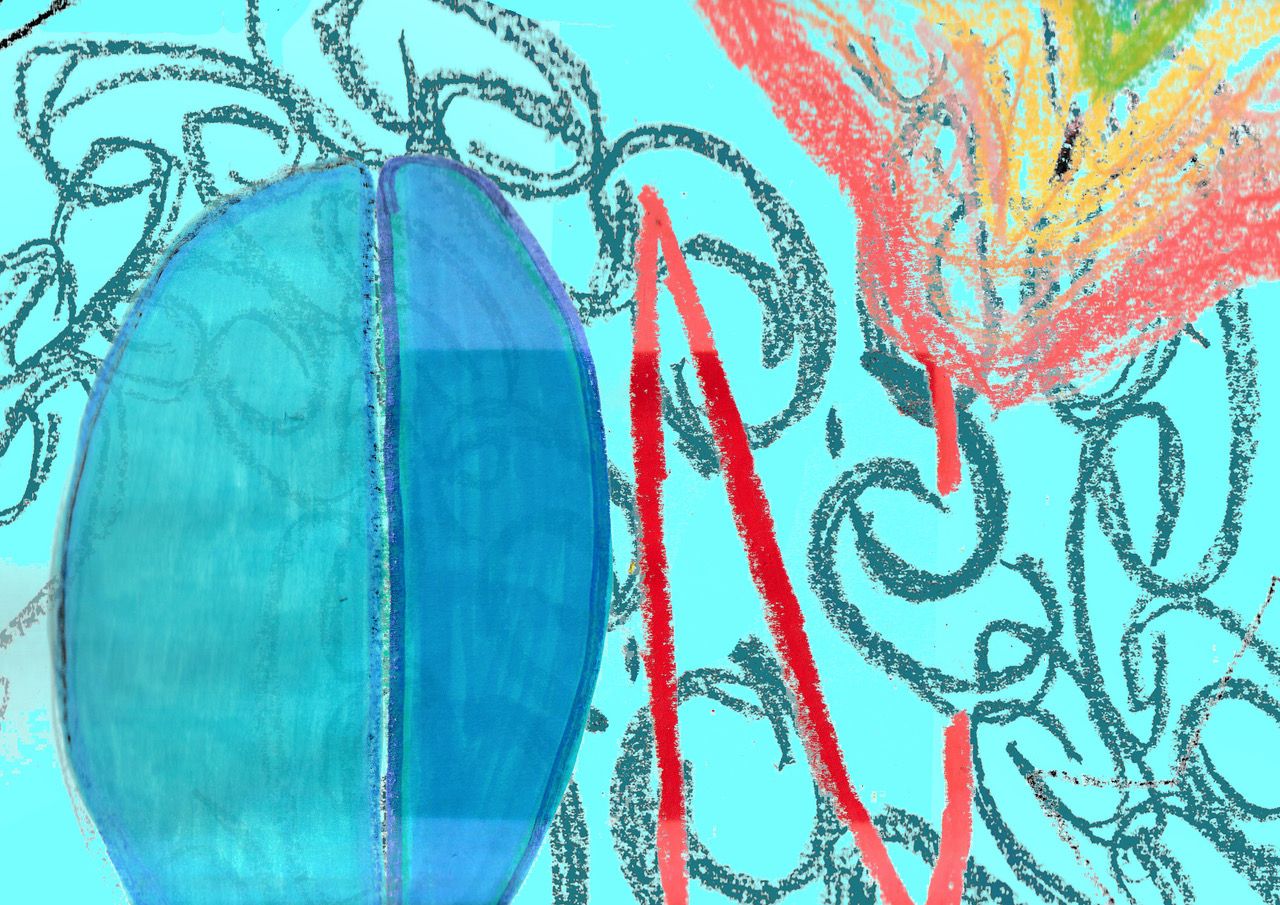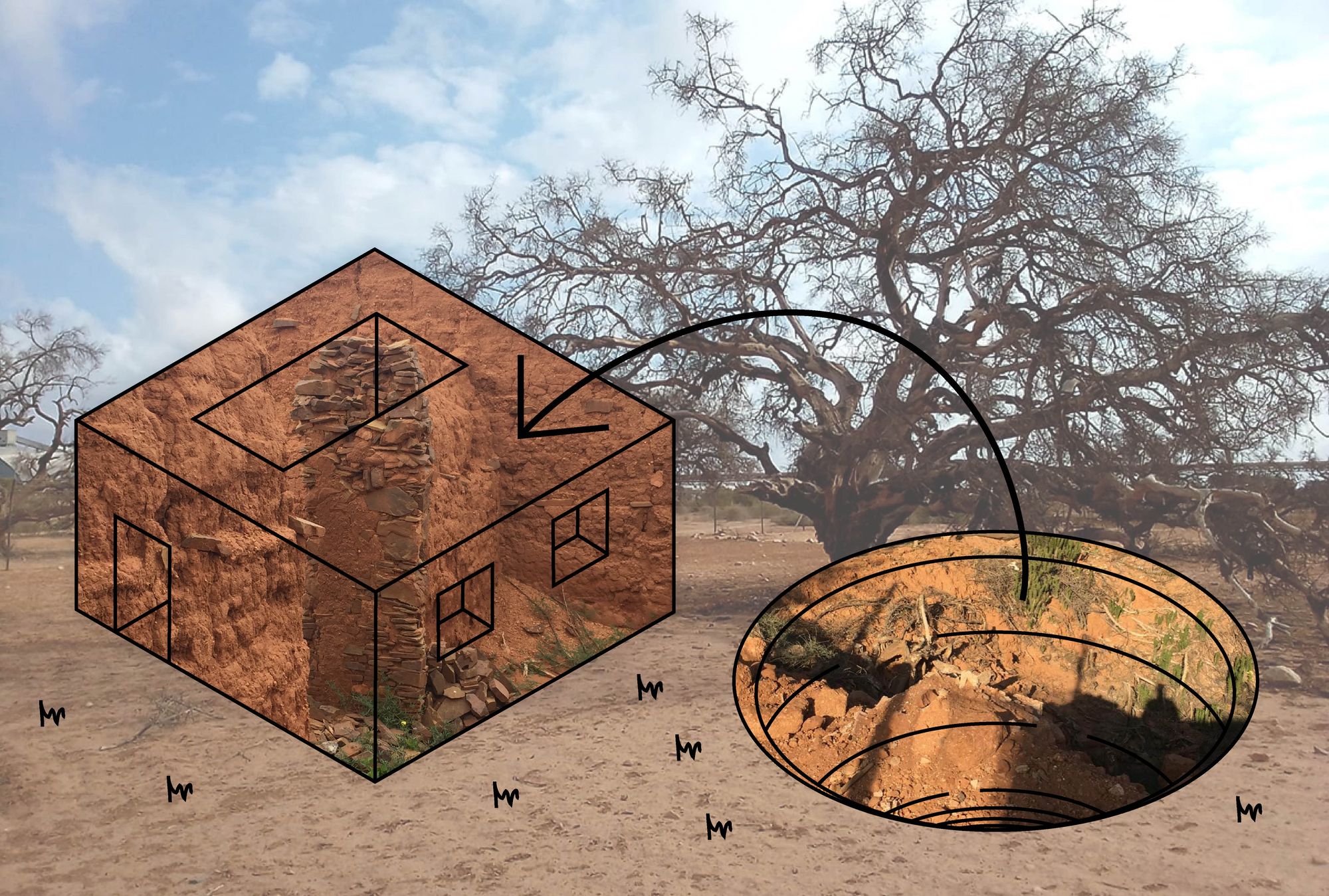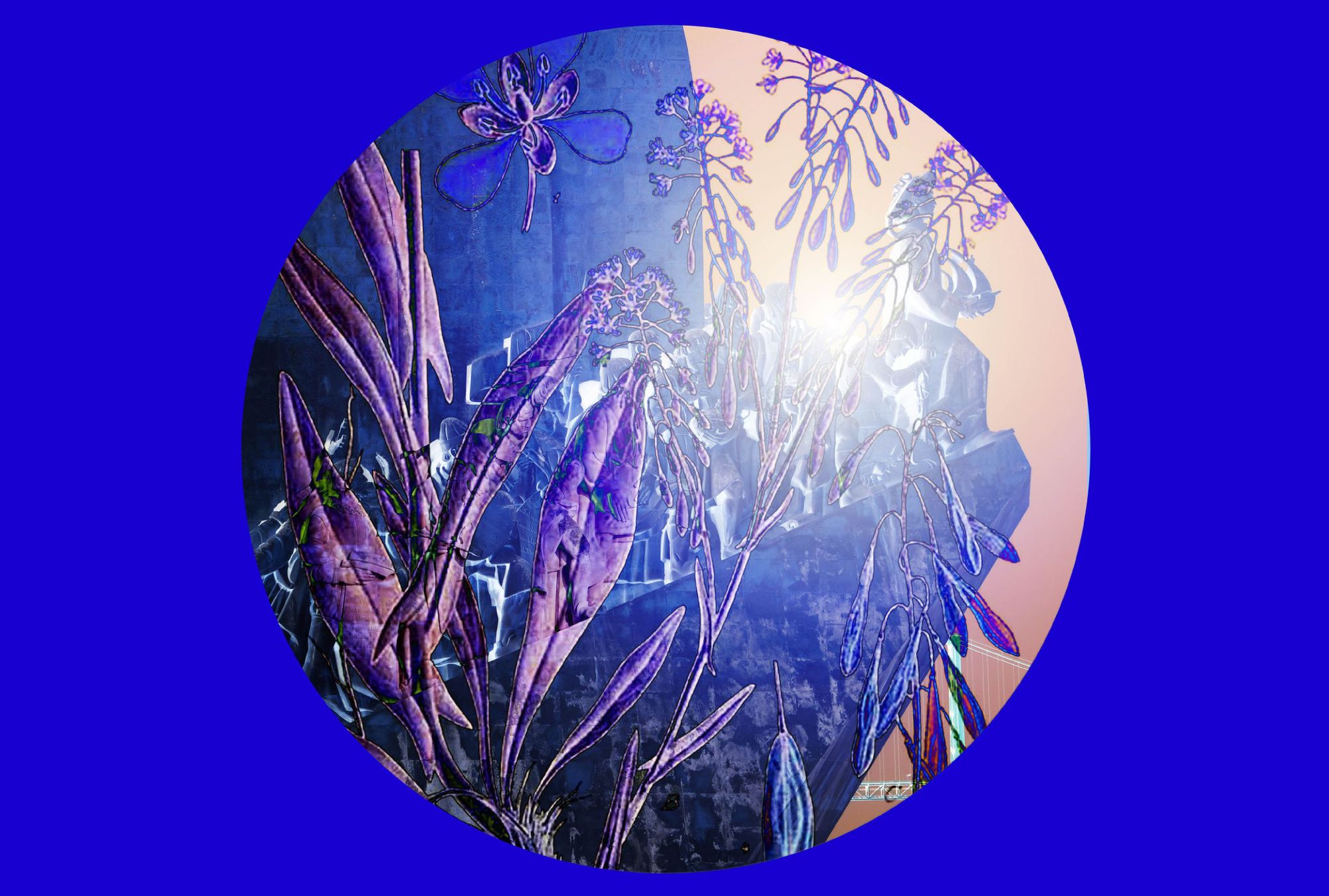
At first the tall, slender white structure seems to stretch out, the vertical beam of its cross reaching toward a luminous blue sky as if attempting to pull it into the earth beneath. A few steps to the side, however, and the new angle reveals another, more ominous ambition: shaped like the prow of a caravel, the solid white monument seems to want to launch itself toward the profound blue of the point where the Tagus river meets the Atlantic ocean, in ruthless pursuit of the exact point where the water meets the sky.
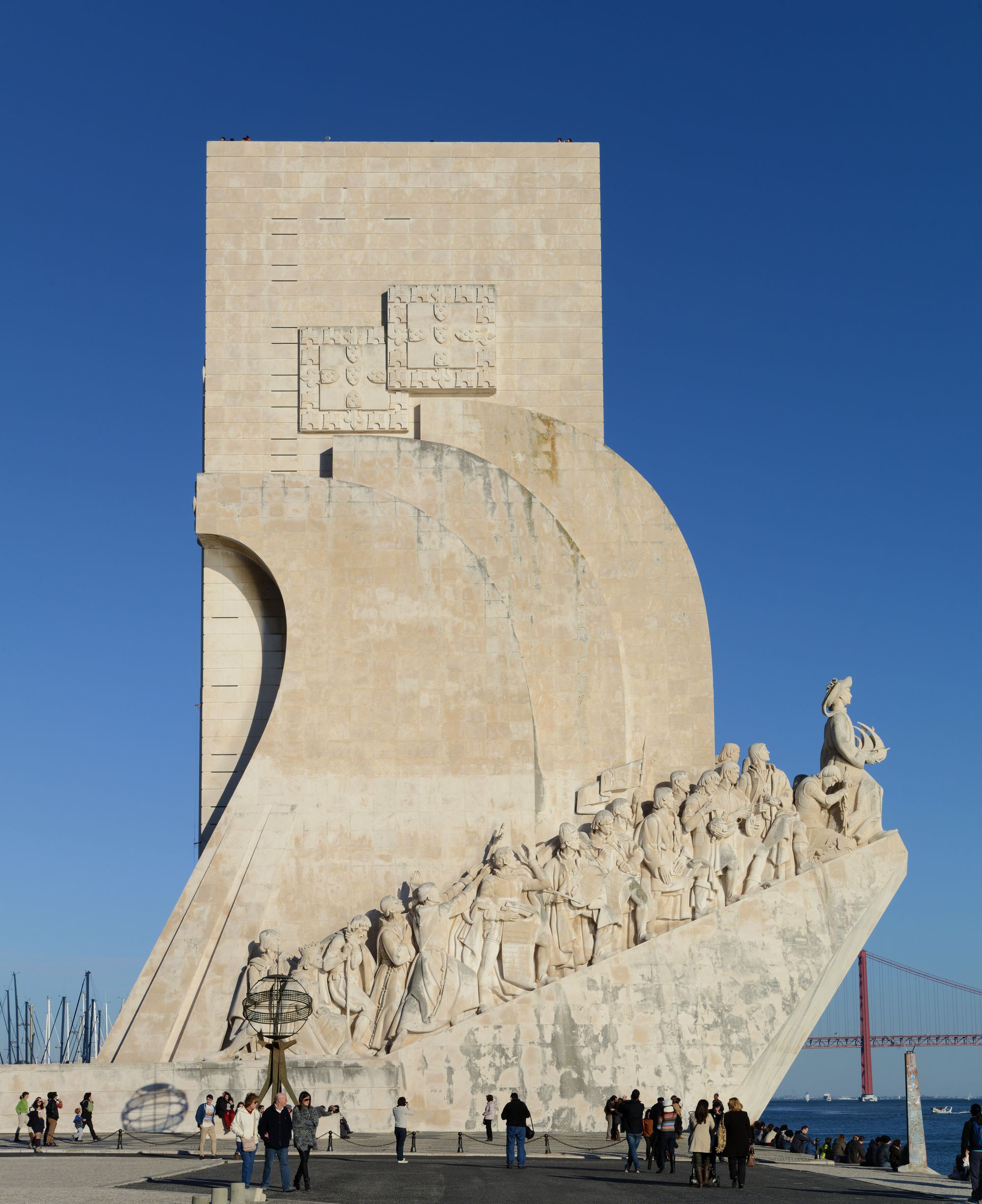
Aboard the vessel, a mass of white bodies collide into one another as if able to propel themselves into the horizon by sheer force of will. Erected at the outskirts of Lisbon under the regime of dictator António de Oliveira Salazar in 1960, the Padrão dos Descobrimentos—Monument of the Discoveries—is meant to celebrate the Portuguese Age of Discovery, the early modern period when this small kingdom expanded its power overseas through the invasion and pillage of lands—and thereby the enslavement, murder, and exploitation of human beings. A violent hunger for power and domination, framed as a heroic desire for adventure, cutting the deep blue of the sea and the sky at the edge of Europe.
It is across the blue immensity of the Atlantic, following the line traced by the prow of the white stone caravel, that a group of nine volcanic islands emerges: the Azores. Although archeological traces suggesting earlier settlement have been found in some of the islands, most accounts associate the beginning of human history on those shores to the arrival of Portuguese ships in the 15th century. Currently one of two autonomous regions of Portugal, the islands are located about 1400 km west from Lisbon, 1900 km southeast from the shores of Canada, and 1500 km northwest of Morocco. Situated squarely in the middle of the transatlantic slave trade routes, the islands offered a convenient stop for the ships that violently sliced through salty waters for centuries during the painful and laborious birth of modernity. Indeed, in February 1493, on the homeward voyage from the newly-invaded continent, Christopher Columbus ran ashore in one of the islands—an unscheduled stop in Portuguese territory, which speaks to the strategic location of the archipelago.
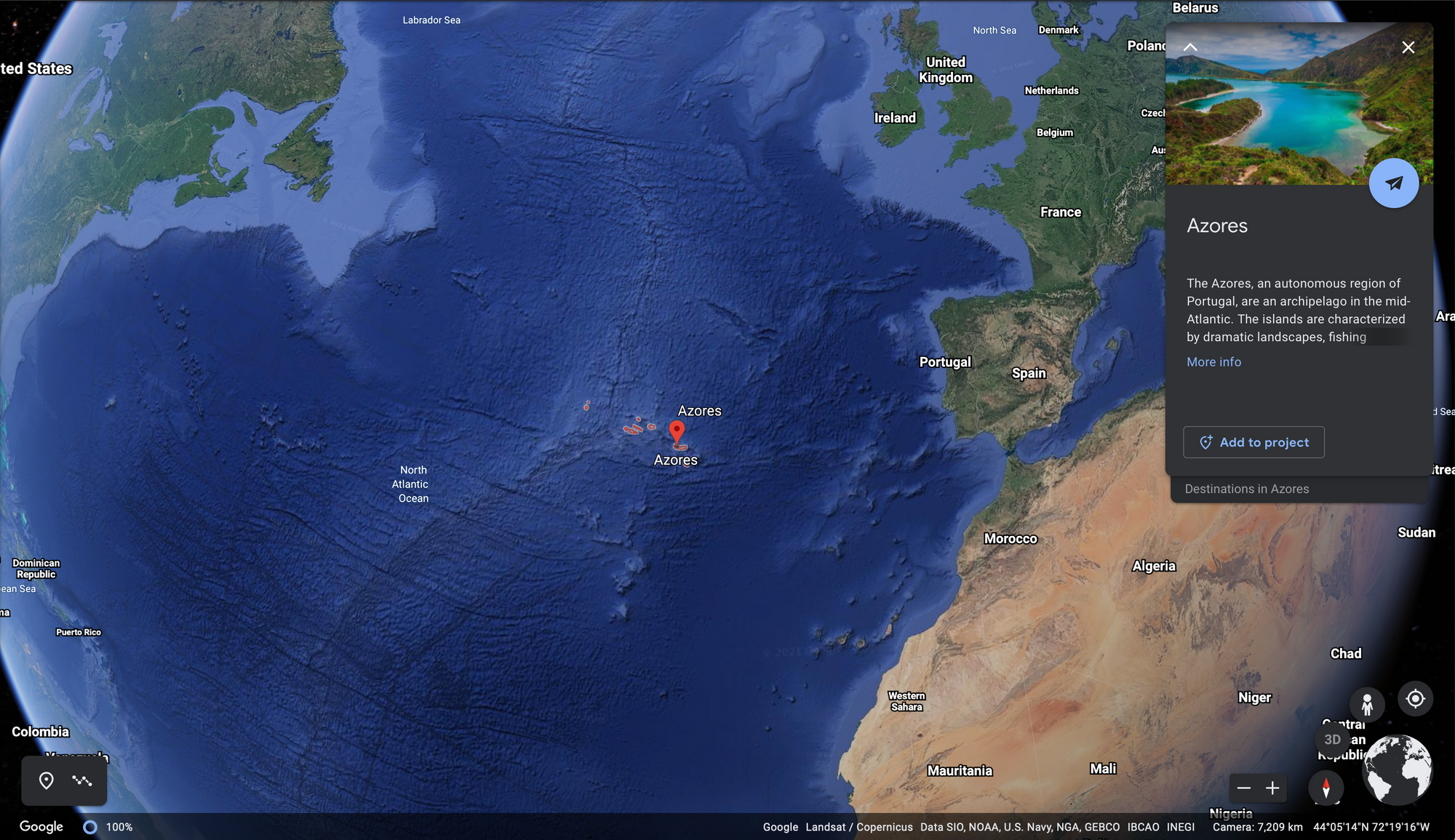
The traces of colonization are woven into the landscape of the Azores. A significant portion of its fauna and flora is not native, having been introduced to the islands as a result of the Portuguese expansion throughout the world. Such is the case for Isatis tinctoria, a flowering plant in the Brassicaceae family. The plant displays deep green, oblong leaves concentrated at the base of each stalk. Though individual specimens might not be particularly striking, fields of blooming Isatis offer a rather spectacular view: crowns of small, yellow flowers moving slowly with the wind. Thought to be native to Central Asia, the plant was likely introduced to Europe during the late Prehistory and Protohistory periods. Woad, as it is more commonly known, is a remarkably hardy plant, tolerant of heat and water stress. It has a wide array of medicinal and culinary uses. Ancient Greek physicians Hyppocrates, Galen and Pliny recommended it for the treatment of ulcers and other wounds, and its boiled flower buds are still eaten in rural parts of Sicily, where it is often added to salads and omelettes.
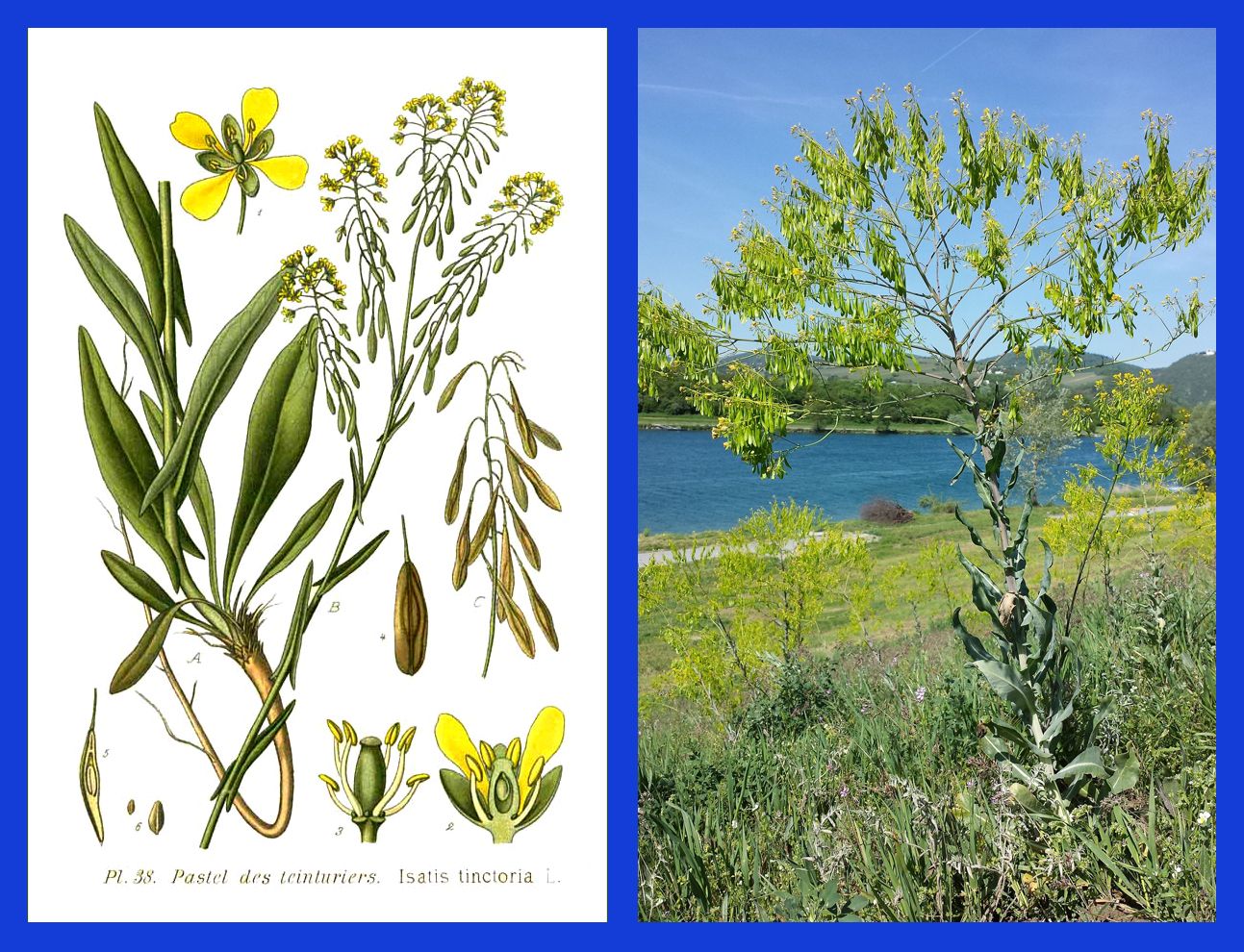
Most significant, however, is its role as a main ingredient in the production of indigo dye—the deep, ultramarine blue hue so akin to the waters of the Atlantic Ocean. Ancient Egyptians used Isatis tinctoria to color the fabrics that would wrap the dead, accompanying them on their journey to the world beyond. Celtic and Germanic peoples used the indigo extracted from woad to dye their hair and body paint for ritualistic purposes, and the Celtics also used the pigment and a stick-and-poke technique for tattoos, as Julius Caesar described.
Nevertheless, the history of indigo dye isn’t strictly linked to that of the Isatis tinctoria plant. The pigment can be extracted from hundreds of different plant species. In fact, a species that yields a more concentrated form of the pigment, Indigofera tinctoria—often called ‘true indigo’—has long been cultivated and used in South, Central, and East Asia. The earliest documented trace of indigo dye dates back to 4000 BC at Huaca Prieta, a ceremonial site in Peru. Research suggests that the pigment found at the archeological site was extracted from plants in the Indigofera genus, rather than Isatis.
The stories of both plants have indeed, indeed become intertwined by the colonial trade routes that cut through lands and oceans. Isatis tinctoria played a fundamental role in the settlement process of the Azores, an anchor that sustained the Portuguese outpost in the Atlantic. The hardy woad thrived in the rocky, volcanic terrain of the islands, and constituted a major commercial activity during the 15th and 16th centuries. Unlike other Portuguese colonies, the Azores were never really a plantation economy—perhaps precisely because its environment was not ideal for the establishment of monocultures on a large scale; cash crops like sugarcane and coffee did not fare well in these islands. However, the regular transportation routes established through the colonization of the Americas, facilitated the export of the dye produced in the Azores, primarily to Flanders. These maritime routes allowed the Portuguese crown to maintain a strong grip over the production and commercialization of woad indigo for two centuries, in direct competition with producers of the dye in France, Germany, England, and Italy.
Nevertheless, the insatiable exploration of the blue waters of the Atlantic would indirectly lead to the demise of the woad economy in the Azores, and to the general decline in the use of this pigment throughout Europe. Indigofera tinctoria had been known in Europe since the 13th century, with the establishment of trade routes to Asia. Although cheaper to produce than Isatis indigo, traversing the disputed regions around the Mediterranean and Arabian peninsula made the import of true indigo from South Asia a risky endeavor. This, however, changed with Portuguese colonist Vasco Da Gama’s circumnavigation of the African continent in 1497, which established a direct maritime route between Europe and South Asia. The subsequent explosion of commerce between the two continents allowed the price of the Indigofera-based pigment to drop, leading to a sharp decline in the production of Isatis-based pigment in the Azores in the 16th century.
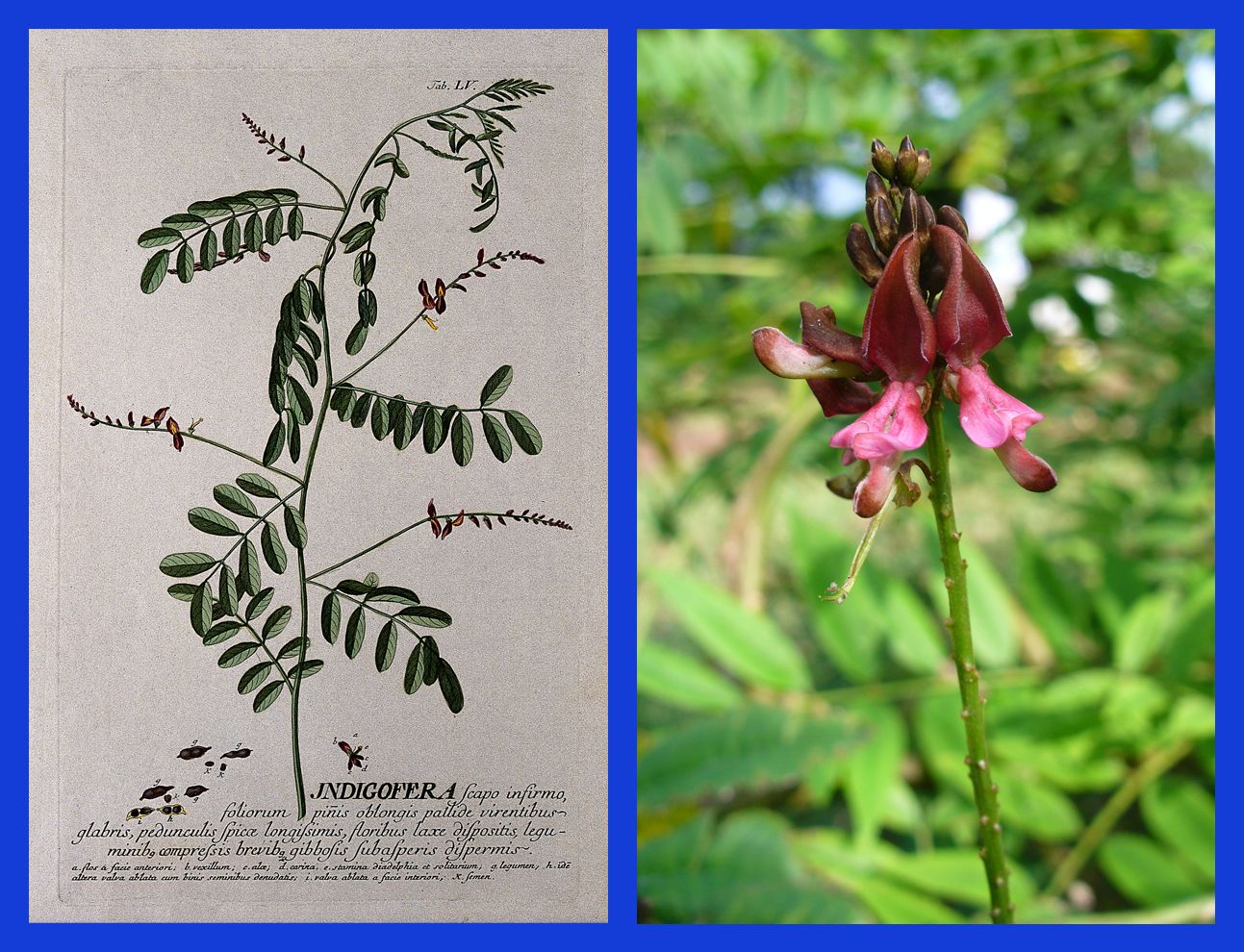
Throughout the 17th century, the production of the blue dye shifted further away from Europe, with lucrative Indigofera varieties being cultivated in Caribbean, North, and Central American colonies. By the second half of the 18th century, indigo had become a major crop in the plantation economy of South Carolina and, to a lesser extent, Georgia; an economic explosion sustained by the exploitation of the labor and skill of enslaved Native and African peoples. Most of the output would travel across the ocean, feeding the flourishing British textile production during the early Industrial Revolution. The profound shifts and accelerating pace in global trade networks and economic models triggered by the Industrial Revolution would also ultimately shape the history of the pigment throughout the 20th century—from the durable, indigo-dyed denim and chambray fabrics that enveloped the bodies of factory workers and gave rise to the term ‘blue collar’ as a descriptor of the working class; to the popularization of blue jeans by 1950s U.S. pop culture; to its subsequent association with Western capitalism during the Cold War.
Blue, stained with red. Over sixty years after its construction, the monument to Portugal’s genocidal quest for power still stands tall. One day, perhaps, it will topple, its white stone engulfed by deep, indigo waters.
Luiza Prado de O. Martins (she/her) is an artist and researcher whose work examines themes around fertility, reproduction, coloniality, gender, and race. In her doctoral dissertation she approaches the control over fertility and reproduction as a foundational biopolitical gesture for the establishment of the colonial/modern gender system, theorizing the emergence of ‘technoecologies of birth control’ as a framework for observing—and resisting, disrupting, troubling—colonial domination. Her ongoing artistic research project, “A Topography of Excesses,” looks into encounters between human and plant beings within the context of indigenous and folk reproductive medicine, approaching these practices as expressions of radical care. Throughout 2020, she will develop the long-term garden project “In Weaving Shared Soil” in collaboration with The Institute for Endotic Research. She is currently based in Berlin. She is a founding member of Decolonising Design.








